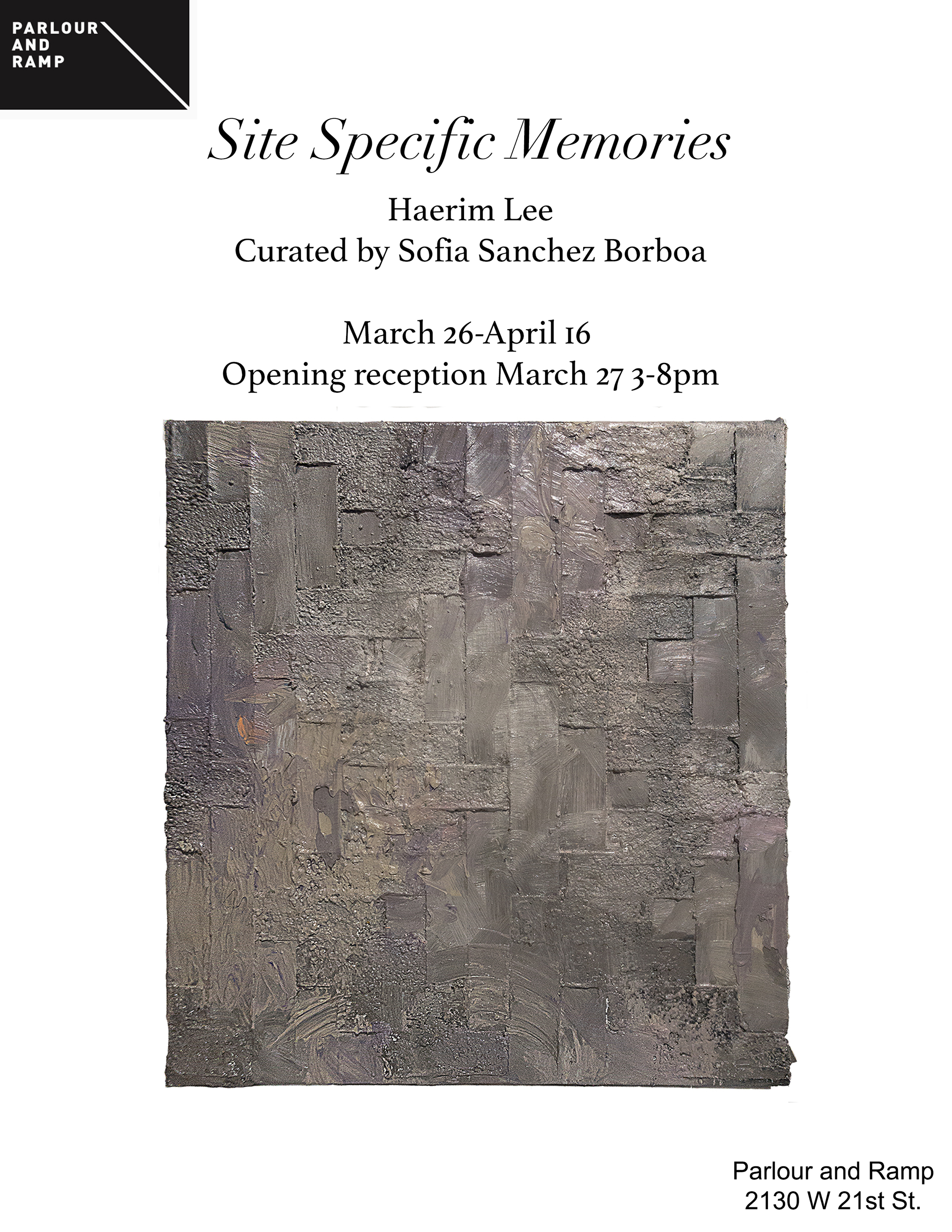

Site-Specific Memories presents Haerim Lee's most recent work that questions the social-political implications of white-washing through abstract paintings, photographs, and artist's books. As an artist with a research-based practice, she investigates the history of the mural All of Mankind (1972) by Bill Walker. By working with archives, community storytelling, and her own memories of the site, she explores the concept of authority when it comes to preserving or destroying history and its implications on local symbols.
In 1972, muralist Bill Walker painted All of Mankind on the façade of the Strangers Home Missionary Baptist Church in Cabrini Green. This was a mural that presented four people of different genders and ethnicities interlocking arms. They stood in front of a stained-glass window with symbols of different religions. On top of them was a cross and the phrase "why were they crucified?" along with the names of important historical figures such as Gandhi, Jesus, Malcolm X, Dr. King, and Anne Frank. In part, this was an allusion to the church community's transformation from Italian-American to African-American. It represented Walker's philosophy of putting aside individualism and racial differences for a better future.
After the demolition of the last Cabrini-Green apartment building, it seemed like there was no one interested in this building. Then, the All of Mankind Coalition, a small community group of writers, architects, and artists, formed and tried without any success to restore and preserve the mural. By 2015, the mural was white-washed to make it more appealing to the real estate market.
Murals have a long-standing history of being a place of marginality where resistance is consciously chosen and maintained. By featuring people interlocking their arms, an action commonly used in protests, All of Mankind resists outside narratives by asserting the community’s values of unity. As bell hooks describes in her text "Choosing the Margin as a Space of Radical Openness," she suggests that the margin "nourishes the capacity to resist." (150) To resist this place, it is necessary to speak from a place of personal vision and counter-language. Murals serve as this creative space where multiple voices speak as a form of resistance in what could be an ephemeral space. Murals show how communities that often stand at the margins see themselves, their identity, and how they choose to tell their history.
In one of her site visits, Lee saw that some community members were trying to scrape the white painting away in order to reveal Walker's mural. The incident, inscribed into her memories, inspired Lee to do the same and create abstract paintings made of sand and scraps from the white-washed mural. Her paintings portray the layers and interweavings of concealment in the incidents surrounding the mural. They also offer a reflection of the way history is white-washed and layered by an institutional voice.
She also employs photography to create a subjective experience with history. Lee's photo collages are made up of her own photos and from the photo archives of the Chicago Public Art Group (CPAG). She collapses the contemporary and historical moment on the two-dimensional surface. She layers space and time through the interplay of grainy black-and-white photographs with chromatic positive film.
Her artist books, on the other hand, are a reference to Lee's research-based practice. They are small-scale accordion books containing the mural and texts from her writings and community interviews. They allude to the idea that books as well as murals are places where the audience can access and understand history.
By recollecting her own memories and those from the community, this body of work is a form of invention. Creating from the margin, she explores the relationship between location and cultural identity to question inclusivity and exclusivity, racial diversity, resistance, and positionality. Through Site-Specific Memories, she creates a narration of the events from recollected memories surrounding the white-washing of All of Mankind. This new narration serves to hold space for the voices from a community in the margins.
Fragment of bell hook's text "Choosing the Margin as a Space of Radical Openness."
Photo credit: Haerim Lee
Photo Credit: Haerim Lee
Photo Credit: Haerim Lee
Photo Credit: Haerim Lee